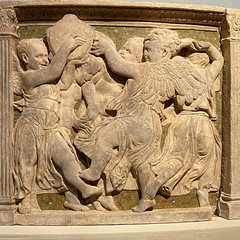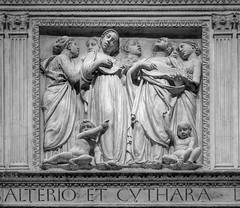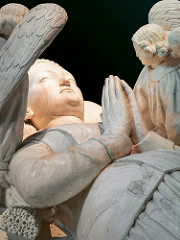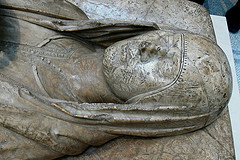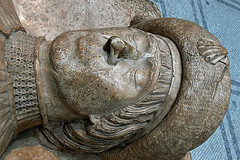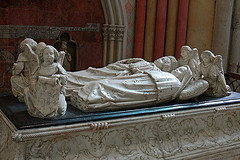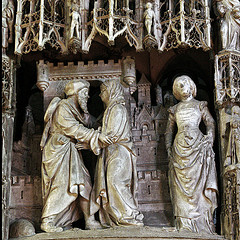Index of Renaissance Sculpture

In fifteenth-century Florence, the image of the Virgin and Child underwent a quiet revolution. From the solemn, hieratic figures of late Gothic piety, the Madonna became an image of tender humanity, no longer distant and majestic, but immediate, emotional, and profoundly relatable. This transformation mirrors a broader shift in Renaissance devotion: the movement of sacred experience from church to home, from the grandeur of the altar to the intimacy of domestic life.
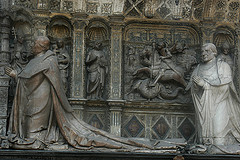 Commencé en 1515, et achevé en 1525, ce tombeau est l'oeuvre de Roullant Le Roux qui était à l'époque maître maçon de la cathédrale de Rouen. Ce monument a été construit à la mémoire du cardinal français et archévêque de Rouen, George d' Amboise (d1510); l'autre figure représente le neveu de George d'Amboise (d1550) qui devint archévêque à la mort de son oncle.
Commencé en 1515, et achevé en 1525, ce tombeau est l'oeuvre de Roullant Le Roux qui était à l'époque maître maçon de la cathédrale de Rouen. Ce monument a été construit à la mémoire du cardinal français et archévêque de Rouen, George d' Amboise (d1510); l'autre figure représente le neveu de George d'Amboise (d1550) qui devint archévêque à la mort de son oncle.
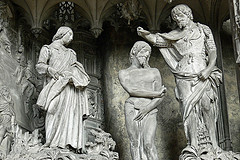 Au-dessus du jubé de la cathédrale de Chartres se trouve quelques 40 reliefs sculptés de scènes bibliques et d'autres scènes de la vie de la Vierge Marie. Les scènes ont été sculptées par plusieurs des meilleurs artistes de France de cette l'époque et ont été commandées égallement durant diverses dates, ceci au cours d'une période de 200 ans, entre 1510 à 1720.
Au-dessus du jubé de la cathédrale de Chartres se trouve quelques 40 reliefs sculptés de scènes bibliques et d'autres scènes de la vie de la Vierge Marie. Les scènes ont été sculptées par plusieurs des meilleurs artistes de France de cette l'époque et ont été commandées égallement durant diverses dates, ceci au cours d'une période de 200 ans, entre 1510 à 1720.
La première séquence de la sculpture sur le jubé du choeur, commençant à l'extrémité ouest de l'ambulatoire du sud, est l'œuvre de Jehan Soulas 1519 à 1521. Sculptés dans la pierre calcaire de la carrière Tonnerre, ces scènes se composent du Protévangile de St Jacques, représentant l'Annonciation de la Vierge Marie à Joachim et à Sainte Anne, la naissance de Marie, et la présentation de Marie au temple.

